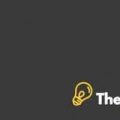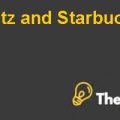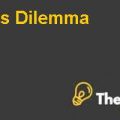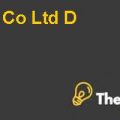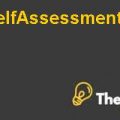Nestle SA- Health and Wellness Strategy Case Solution
Threat of Substitution:
The threat of substitution is high in the market. It is due to the fact that since there are other products offerings such as traditional foods and the other brands offering the similar products in the market such as P&G, making it difficult for the company to develop a clear leadership and value proposition in the market.
SWOT Analysis
Strengths:
- Nestle has got a highly diversified product lines which has been catering to different markets on a global scale.
- Due to presence in different market segments, Nestle has the ability to perform better in times of weak economy as it hedge the risk associated with one portfolio.
- The company’s strong relationships have been developed with huge retailers like Wal-Mart, which allow it to reach maximum customer base.
- It has strong Research and Development department which makes it competitive in the market.
- Its revenue sources are highly diversified.
Weakness:
- Major chunk of its sales is dependent on few of its brands which can be harmed in case consumer behavior changes.
- Major portion of its sales is dependent of giant retailers available in the market such as Walmart, Tesco and Kruger so in case if they force reduction in the prices of Nestle products then they will have to imply with their conditions.
- Sales of Nestle products is heavily dependent on the advertisements in order for them to compete in the market which also plays a vital role in shaping the behavior of the consumers.
Opportunities:
- The opportunity that amazon has introduced for having new distribution channels can be utilized by Nestle in order to bypass the retailers and have its own retail stores.
- The company has great opportunity existing in the Chinese and Indian markets due to increase in demands from these both regions and high consumption rate in the countries.
- Countries where disposable income of people is increasing can boost the demand of Nestlé’s luxury items such as ice-cream, pet food etc.
- Lastly, it has great opportunity to diversify the portfolio to healthy eating industry.
Threats:
- Giant retailers has the power to showcase their home made products on the shelves first at a lower price which could cause a huge threat to Nestlé’s products.
- Giant retailers at times pressurizes giant brands to cut down on their retail prices which means the loss of revenue.
- The company faces huge competition from the local small producers and manufacturers, along with the giant player such as P&G, which if produce the similar food, may deteriorate the value proposition of the company.
Strategic Alternative
In order to resolve the above issue, following alternatives are proposed:
Alternative 1:
The company should invest in the research and development institution to gauge the market trends that will help the company in targeting the customer with right offers.
Pros:
- This will allow the company to determine the customer needs and demands, making it enable to develop the right product for the company.
- It will also allow the company to penetrate market more aggressively offering new healthy product.
- The in-depth analysis of the market will allow Nestle to identify the loopholes in the existing strategy that have made it lose the sales margin, in the initial period.
Cons:
- This will make the company to invest heavily in the research and development, creating tug of war between the new product development process and research.
- In addition, this will also make the company to wait for the findings to show the customer trend, creating the chances that the other player may tap the opportunity before Nestle.
Alternative 2:
The company should pursue to invest and acquire the heath related ventures which it has done before on an aggressive scale.
Pros:
- This will allow the company to quickly capture the market opportunity and expand vividly in the market.
- This will make the company to gain more rapid market share.
- In addition, this will also allow the company to increase the sales and also increases the profit margins with extensive market development and market penetration strategy.
Cons:
- The aggressive acquisition may deteriorate the brand image and brand value of the company, leading to the loss of the real Nestle brand in the market.
- The acquisition and the simultaneous investment in the private label products may lead to cash scarcity, reducing the profit margins.
Decision Criteria
| Factors | Alternative:1 | Alternative:2 |
| Sales | 1 | 2 |
| Competitive Edge | 2 | 2 |
| Profit Margins | 1 | 2 |
| Brand Image | 1 | 2 |
| Value Proposition | 1.5 | 2 |
| Total | 6.5 | 10 |
Recommendation
By analyzing the overall strategy, it is recommended that the company should pursue the second alternative of pursuing the acquisition strategy in the market. It is due to the fact that by applying the second strategy, it will allow Nestle to develop the strong foundation of the hearth and wellness brand image in the market and will also make it to invest smartly in the new vision.
In an addition to this, the particular strategy will make the company to capture more markets and will make it to invest the cash into milking the researches carried. As producing the own product from scarce will take a lot of resources and cash consumption, acquiring it than rebranding it under the Nestle umbrella will make the company to move and penetrate the markets effectively and efficiently (Lemire, 2003).
Action and Implementation Strategy
Short Term Plan (0-1 Year):
Under the short term plan, the company will take the market survey to identify the potential players for acqusitioiuon. Such analysis will include the market share, customer view and brand positioning in the mind of the consumer. Such factors will be gauged, as it will allow the company to determine the value of the other companies and its benefits for the Nestle heath and wellness strategy. In the same period, the company will select three player to acquire merely all player will rebrand those products under Nestlé’s name.
Long Term Plan (1- 5 Year):
Under the long term plan, the company will acquire more SME players and will also strategize investing aggressively into research and development to produce private label products. Since, by this time, the company will have developed the strong wellness and health brand image, it will now invest in the research and development to gauge the customer review and feedback then develop the next branding and sales strategy effectively (Martin, 2016)..................
This is just a sample partical work. Please place the order on the website to get your own originally done case solution.

